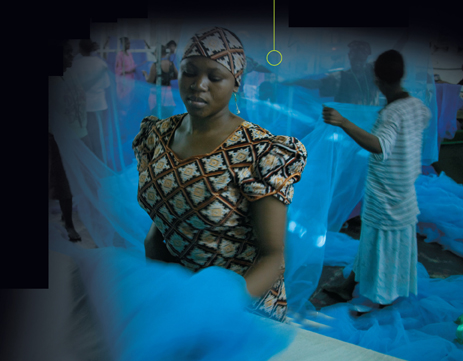Technology & Biology
Low-Tech Weapons Against a High-Tech Parasite
Malaria is one of the most serious infectious diseases in the world, claiming the life of a child every 30 seconds, day and night. The disease is caused by a spore-forming protist, Plasmodium falciparum, carried by the Anopheles mosquito. Efforts to produce vaccines against the disease have shown some promise, but even the best vaccines to date provide only marginal protection. To make matters worse, drugs that once kept the disease in check, including chloroquine, are almost useless today. In most regions of the world, the parasite has evolved resistance to these drugs.
Research on the disease continues, and scientists have now worked out the complete genome of both the parasite and the mosquito that carries it. The hope is that a better understanding of the genetics of the disease will allow scientists to fashion high-tech weapons against this killer. Surprisingly, however, one of the most promising approaches involves a very low-tech weapon—mosquito netting.
Most malaria infections are the result of mosquito bites that occur when people are sleeping. Studies have shown that when most of a village's residents sleep under insecticide-treated nets, mosquitoes begin to die off, and the likelihood of malaria infection goes down. The cost of the nets, about ten dollars, is remarkably small when measured against the human cost in lives and lost productivity. But it is estimated that as many as 250 million of the nets will be needed to protect populations at risk of this disease. Many charities are now featuring the nets in their fundraising appeals.
WRITING
Visit several Web sites run by organizations with an antimalaria mission. Then, describe how mosquito netting, a low-tech approach, might be combined effectively with antimalarial vaccines and drugs and other high-tech approaches.

Table of Contents
- Formulas and Equations
- Applying Formulas and Equations
- Mean, Median, and Mode
- Estimation
- Using Measurements in Calculations
- Effects of Measurement Errors
- Accuracy
- Precision
- Comparing Accuracy and Precision
- Significant Figures
- Calculating With Significant Figures
- Scientific Notation
- Calculating With Scientific Notation
- Dimensional Analysis
- Applying Dimensional Analysis




